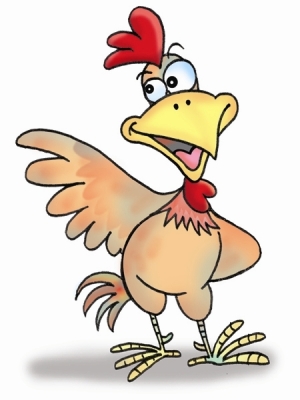Posts Tagged ‘therapy’
10
Mar
Posted by balancechicago in Vestibular Disorders - In Depth, Vestibular Support Group. Tagged: balance, balance disorder, BPPV, Chicago, chronic illness, disorder, dizziness, dizzy, exercise, health, labyrinthitis, Meniere's Disease, neurotoxicity, positional vertigo, rehabilitation, Support group, therapy, tinnitus, treatment, vestibular, vestibular disorder, vestibular disorders, vestibular rehab therapy, Vestibular Support Group. Leave a comment
Join us on Saturday, April 17th for our Vestibular Support Group, located at our office at 3130 N Lincoln Avenue in Chicago, IL (60657). Refreshments will be served at 11:30am and the meeting will begin at 12pm and will last for approximately one hour.
We would love all of those affected by vestibular disorders to join us! Friends and family, as well as other support systems, are welcome.
To RSVP, please call: 773-525-5200.
27
Jan
Posted by balancechicago in Vestibular Disorders - In Depth. Tagged: balance, balance disorder, BPPV, disorder, dizziness, dizzy, health, inner ear, physical therapy, positional vertigo, tai chi, Tai Chi and balance disorders, therapy, vertigo, vestibular, vestibular disorder, vestibular disorders, vestibular rehab therapy. Leave a comment
A recent study conducted in 2008-2009 showed that the martial art practice Tai Chi is an effective treatment for people with vestibular disorders.

Tai Chi
Tai Chi is an practice incorporating slow movements of the body into different postures using your own body’s coordination. According to the American Academy of Otolaryngology, Tai Chi is helpful for those with balance disorders because it helps people concentrate on their own coordination.
http://www.medindia.net/news/Tai-Chi-Proved-Effective-Against-Dizziness-Balance-Disorders-59053-1.htm
12
Nov
Posted by balancechicago in Vestibular Disorders - In Depth. Tagged: balance, balance disorder, BPPV, chronic illness, disorder, dizziness, dizzy, doctor, health, labyrinthitis, Meniere's Disease, nausea and dizziness, nausea and vertigo, physical therapy, positional vertigo, rehabilitation, therapy, tinnitus, treatment, vertigo, vestibular, vestibular disorder, vestibular disorders, vestibular rehab therapy. Leave a comment
There is a good chance that during vestibular rehabilitation therapy you may still feel dizzy. The vestibular system tells your brain where your head is in space (up, down, left…). When the vestibular system is weakened, in an accident or after being sick, the vestibular system has a hard time figuring out where your head is located in space, causing you to be off balance.
During vestibular rehabiliation therapy, you are doing exercises that are intentionally making you dizzy. Exercises that include moving the head left to right while focusing on a steady object is one example. By focusing on a still object while moving your head left to right, you are re-training the brain to coordinate the information between the senses and the vestibular system so that signals are sent correctly to the brain.
Your exercises will get increasingly hard as you progress through your therapy and your symptoms may flare up because your brain will not be used to the increase in difficulty (ie. new visual cues). Do not despair, this happens to some of our patients!
How do you combat this dizziness: Do your exercises at home that your physical therapist provides you with. It will really help you with your dizziness!
4
Nov
Posted by balancechicago in Vestibular Disorders - In Depth. Tagged: balance, balance disorder, BPPV, Chicago, disorder, dizziness, dizzy, health, physical therapy, positional vertigo, rehabilitation, therapy, treatment, vertigo, vestibular, vestibular disorder, vestibular rehab therapy. Leave a comment
Because chickens can regenerate their inner ear sensory hair cells!
(Remember: Balance is based on the inner ear sensory hair cells.)
Humans, though, cannot regenerate inner ear sensory hair cells. Once humans lose their hair cells (whether due to aging), they are gone!
20
Oct
Posted by balancechicago in Vestibular Disorders - In Depth. Tagged: balance, balance disorder, BPPV, Chicago, chronic illness, health, inner ear, neurological dizziness, physical therapy, positional vertigo, rehabilitation, Support group, therapy, treatment, vertigo, vestibular, vestibular disorder, Vestibular Support Group. 2 comments
Join us for our next Vestibular Support Group meeting at our office in Lakeview in Chicago on Saturday, November 14th. Dr. Julia Rahn, Ph.D., will be discussing the psychological challenges of living with vestibular disorders/chronic illness.
11:30 – 12:00pm: Light refreshments
12:00 – 1:00pm: Meeting
For more information, location and to RSVP:
info@balancechicago.com or 773.525.5200
13
Oct
Posted by balancechicago in Vestibular Disorders - In Depth. Tagged: balance, balance disorder, Chicago, dizziness, dizzy, doctor, health, Oprah, physical therapy, positional vertigo, rehabilitation, therapy, treatment, vertigo, vestibular, vestibular disorder. Leave a comment
Oprah is not only one of the most powerful women in the world, she is also one of our favorite Chicagoans!
So it makes me extremely happy when Oprah’s magazine, O, features a story on dizziness and balance disorders. Thanks, Oprah!
Here’s a pretty great article:
http://www.oprah.com/article/omagazine/200907-omag-dizzy-spells
3
Oct
Posted by balancechicago in Vestibular Disorders - In Depth. Tagged: balance, balance disorder, exercise, health, nausea and dizziness, physical therapy, rehabilitation, therapy, tinnitus, treatment, vertigo, vestibular, vestibular disorder, vestibular rehab therapy. Leave a comment
 From the National Institute on Deafness and Other Communication Disorders
From the National Institute on Deafness and Other Communication Disorders
Although there is no cure for tinnitus, scientists and doctors have discovered several treatments that may give you some relief. Not every treatment works for everyone, so you may need to try several to find the ones that help.
Treatments can include:
- Hearing aids. Many people with tinnitus also have a hearing loss. Wearing a hearing aid makes it easier for some people to hear the sounds they need to hear by making them louder. The better you hear other people talking or the music you like, the less you notice your tinnitus.
- Maskers. Maskers are small electronic devices that use sound to make tinnitus less noticeable. Maskers do not make tinnitus go away, but they make the ringing or roaring seem softer. For some people, maskers hide their tinnitus so well that they can barely hear it.Some people sleep better when they use maskers. Listening to static at a low volume on the radio or using bedside maskers can help. These are devices you can put by your bed instead of behind your ear. They can help you ignore your tinnitus and fall asleep.
- Medicine or drug therapy. Some medicines may ease tinnitus. If your doctor prescribes medicine to treat your tinnitus, he or she can tell you whether the medicine has any side effects.
- Tinnitus retraining therapy. This treatment uses a combination of counseling and maskers. Otolaryngologists and audiologists help you learn how to deal with your tinnitus better. You may also use maskers to make your tinnitus less noticeable. After a while, some people learn how to avoid thinking about their tinnitus. It takes time for this treatment to work, but it can be very helpful.
- Counseling. People with tinnitus may become depressed. Talking with a counselor or people in tinnitus support groups may be helpful.
- Relaxing. Learning how to relax is very helpful if the noise in your ears frustrates you. Stress makes tinnitus seem worse. By relaxing, you have a chance to rest and better deal with the sound.
http://www.nidcd.nih.gov/health/hearing/noiseinear.htm#treat
17
Sep
Posted by balancechicago in Vestibular Disorders - In Depth. Tagged: balance, balance disorder, BPPV, disorder, dizziness, dizzy, exercise, health, physical therapy, positional vertigo, rehabilitation, therapy, treatment, vertigo, vestibular, vestibular disorder, vestibular rehab therapy, Vestibular Support Group. Leave a comment
1. Communicate with your spouse. Vestibular disorders are invisible, so you may not be able to see symptoms, which can be frustrating. It is important to openly communicate with your spouse, listen to what they are going through, ask questions and explain how YOU feel.
2. Go to doctor’s appointments with your spouse. This will give you a better understanding of the prognosis of this balance disorder and an opportunity to ask questions your spouse may not be able to answer.
3. Go to support group meetings with your spouse. This will give you a chance to meet other individuals who are playing the role of the supporting spouse.
4. Make sure YOU have a support system. Whether it be friends, family, or other spouses like yourself, it is important that you have someone that you can vent to.
5. Take time out for YOU. Being someone’s support system is tiring. Make sure to go golfing, get that massage or take that shopping trip that rewards you!
14
Sep
Posted by balancechicago in Vestibular Disorders - In Depth. Tagged: balance, balance disorder, BPPV, cost of healthcare, disorder, dizziness, dizzy, doctor, health, healthcare system, physical therapy, positional vertigo, rehabilitation, therapy, treatment, vertigo, vestibular, vestibular disorder, vestibular rehab therapy. Leave a comment
With healthcare being one of the main topics of discussion in the news lately, I thought I would share a few facts about dizziness and balance disorders and what it’s costing our healthcare system.
Falling & the elderly:

-
– Falls in persons over 65 years old is #1 cause of death
-
– 30-40% of community dwelling adults older than 65 fall
- – A history of gait or balance disorders increase the risk of fall three fold- attributed to 17% of falls
- – Dizziness or complaints of vertigo account for 13%
Cost:
-
A study of people 72 and older found that the average health care cost of a fall injury was $19,440 (including hospital, nursing home, emergency room, and home health care, but not doctors’ services) (Rizzo et al. 1998).
-
The total direct cost of all fall injuries for people 65 and older in 2000 was slightly more than $19 billion: $179 million for fatal falls, and $19 billion for nonfatal falls (Stevens et al. 2006).
-
By 2020, the annual direct and indirect cost of fall injuries is expected to reach $43.8 billion (in current dollars) (Englander et al. 1996).
10
Sep
Posted by balancechicago in Vestibular Disorders - In Depth. Tagged: balance, balance disorder, BPPV, disorder, dizziness, dizzy, exercise, health, Meniere's Disease, nystagmus, physical therapy, positional vertigo, rehabilitation, therapy, treatment, vertigo, vestibular, vestibular disorder, vestibular rehab therapy. Leave a comment
You will most likely hear the word “nystagmus” used when being evaluated by your physical therapist for vestibular disorders (i.e. BPPV). Nystagmus is the involuntary movement of the eye, which can be caused by the impairment of the vestibular system such as BPPV and Meniere’s (it can also be caused by a slew of other disorders).
With BPPV, an inner ear disorder, the eye will move towards the affected ear. This will be noticeable to your physical therapist when they do your evaluation.



